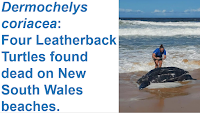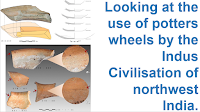Since the beginning of 2023, 557 confirmed cases of Diphtheria have been detected in Nigeria, affecting 21 of the 36 states and the Federal Capital Territory. In December 2022, the Nigeria Centre for Disease Control and Prevention was notified of suspected Diphtheria outbreaks in Kano and Lagos States. From 14 May 2022 to 9 April 2023, 1439 suspected cases have been reported, of which 557 (39%) have been confirmed, including 73 deaths among the confirmed cases (a case fatality ratio of 13%), according to a press release issued by the World Health Organization on 27 April 2023. Nigeria has previously reported Diphtheria outbreaks, with the most significant reported in 2011 affecting the rural areas of Borno State, in the northeast of the country. Diphtheria is a highly contagious vaccine-preventable disease which spreads between people mainly by direct contact or through the air via respiratory droplets. The disease can affect all age groups, however unimmunized children are particular at risk. It is potentially fatal. The disease can be treated by administering Diphtheria antitoxin as well as antibiotics. Vaccination against Diphtheria has reduced the mortality and morbidity of Diphtheria dramatically.
The Nigeria Centre for Disease Control and Prevention was notified of suspected Diphtheria outbreaks in Kano and Lagos States on 1 December 2022. In January 2023, the number of confirmed cases increased, peaking at over 150 cases in epidemiological week 4 of 2023 (ending 28 January - an epidemiological week is a standardized method of counting weeks to allow for the comparison of data year after year); since then, a weekly decreasing trend has been observed. From 14 May 2022 to 9 April 2023, 1439, suspected Diphtheria cases were reported from 21 states in Nigeria, with the majority (83%) of cases reported from Kano (1188), Yobe (97), Katsina (61), Lagos (25), Sokoto (14) and Zamfara (13). Of the 1439 suspected cases, 557 (39%) were confirmed (51 laboratory-confirmed, 504 clinically compatible and two epidemiologically linked), 483 (34%) were discarded, and 399 (28%) are pending classification. Laboratory-confirmed cases were reported from Kano (45), Lagos (3), Kaduna (1), Katsina (1), and Osun (1) states. Among the 557 confirmed cases, 73 deaths were recorded, for a case fatality ratio of 13%. The case fatality ratio has dropped significantly since the beginning of the outbreak due to, among other factors, increased access to Diphtheria antitoxin.

Distribution of Diphtheria cases by state in Nigeria from epidemiological week 19, 2022 to epidemiological week 14, 2023. World Health Organization.
Nigeria had recorded diphtheria outbreaks in the past, but not on this scale. The most significant outbreak reported was between February and November 2011 in the rural areas of Borno State, north-eastern Nigeria, where 98 cases were reported.
Diphtheria is a highly contagious vaccine-preventable disease caused by exotoxin-producing Mycobacterium Corynebacterium diphtheriae It spreads between people mainly by direct contact or through the air via respiratory droplets. The disease can affect all age groups, however unimmunized children are particular at risk. It is potentially fatal. Symptoms often come on gradually, beginning with a sore throat and fever. In severe cases, the Bacteria produce a poison (toxin) that causes a thick grey or white patch at the back of throat. This can block the airways, making it hard to breathe or swallow, and also creates a barking cough. The neck may swell in part due to enlarged lymph nodes. Treatment involves administering Diphtheria antitoxin as well as antibiotics. Vaccination against Diphtheria has reduced the mortality and morbidity of diphtheria dramatically. Diphtheria is fatal in 5-10% of cases, with a higher mortality rate in young children. However, in settings with poor access to Diphtheria antitoxin, the case fatality ratio can be as high as 40%.
Under the leadership of the Nigeria Centre for Disease Control and Prevention, coordination and monitoring of Diphtheria surveillance and response activities in the country are ongoing through the weekly Diphtheria National Technical Working Group meetings. Rapid Response Teams have been deployed to Katsina, Osun and Yobe States and re-deployed to Kano and Lagos States to support response activities. Harmonization of surveillance and laboratory data across states and laboratories is ongoing. Sensitization/training of clinical and surveillance officers has taken place in states where Rapid Response Teams have been deployed, on the presentation, prevention, and surveillance of Diphtheria. Cascaded training has been conducted in the effected states by some of the laboratory scientists/physicians trained at the Nigeria Centre for Disease Control and Prevention National Reference Laboratory in Abuja. Procurement for reagents and sample collection and transportation materials/media processes has been initiated. Drug sensitivity tests are ongoing at Nigeria Centre for Disease Control and Prevention National Reference Laboratory on isolates sent in from states. Distribution of Diphtheria antitoxin to the affected states has been ongoing since December 2022. Strengthening of routine immunization activities across the country continues.
Diphtheria cases are under-reported in Nigeria, with few reports of outbreaks in the past. The last outbreak was reported between February and November 2011 in the village of Kimba and its surrounding settlements in Borno State, north-eastern Nigeria, where 98 cases were reported. The Diphtheria toxoid-containing vaccine third dose coverage in Nigeria is suboptimal. According to the 2021 Nigeria Multiple Indicator Cluster Survey and National Immunization Coverage Survey, the third dose of pentavalent vaccine coverage was 57% in 2021.
Distribution of Diphtheria cases by state in Nigeria from epidemiological week 19, 2022 to epidemiological week 14, 2023. World Health Organization.
The country is currently faced with several public health emergencies such as Lassa Fever, Cholera, Monkeypox, Meningitis and a humanitarian emergency in the northeast of the country. Due to insecurity, especially in north-eastern Nigeria, vaccination coverage remains suboptimal, especially in the areas controlled by non-state armed groups. Therefore, the outbreak of Diphtheria further complicates and strains the already overstretched resources. The global supply of Diphtheria antitoxin is limited, and this may affect the availability of the required doses in a timely manner.
The overall risk of Diphtheria in Nigeria was assessed as high at the national level, low at the regional level, and low at the global level.
The World Health Organization recommends that epidemiological surveillance ensuring early detection of Diphtheria outbreaks should be in place in all countries, and all countries should have access to laboratory facilities that allow for the reliable identification of toxigenic Corynebacterium diphtheriae. For the adequate medical management of cases, sufficient quantities of Diphtheria antitoxin should be available nationally or regionally.
The World Health Organization also recommends early reporting and management of suspected Diphtheria cases to initiate timely treatment of cases and follow-up of contacts and ensure the supply of diphtheria antitoxin. Case management should be carried out following the World Health Organization guideline and involve administering antitoxin to neutralize the toxin and antibiotics to kill the Bacteria, reducing complication and mortality.
As vaccination is key to preventing cases and outbreaks, high-risk populations such as children under five years of age, schoolchildren, close contact of Diphtheria cases, and healthcare workers, should be vaccinated with Diphtheria-containing vaccines on a priority basis. A coordinated response and community engagement can support control of the ongoing outbreak.
Although travelers do not have a special risk of Diphtheria infection, it is recommended that national authorities remind travelers going to areas with Diphtheria outbreaks to be appropriately vaccinated in accordance with their national vaccination scheme. A booster dose is recommended if more than five years have passed since the last dose. The World Health Organization does not recommend any travel and/or trade restrictions to Nigeria based on the information available for this event.
See also...











































.jpg)
.jpg)





